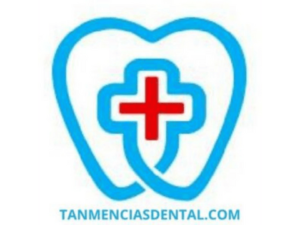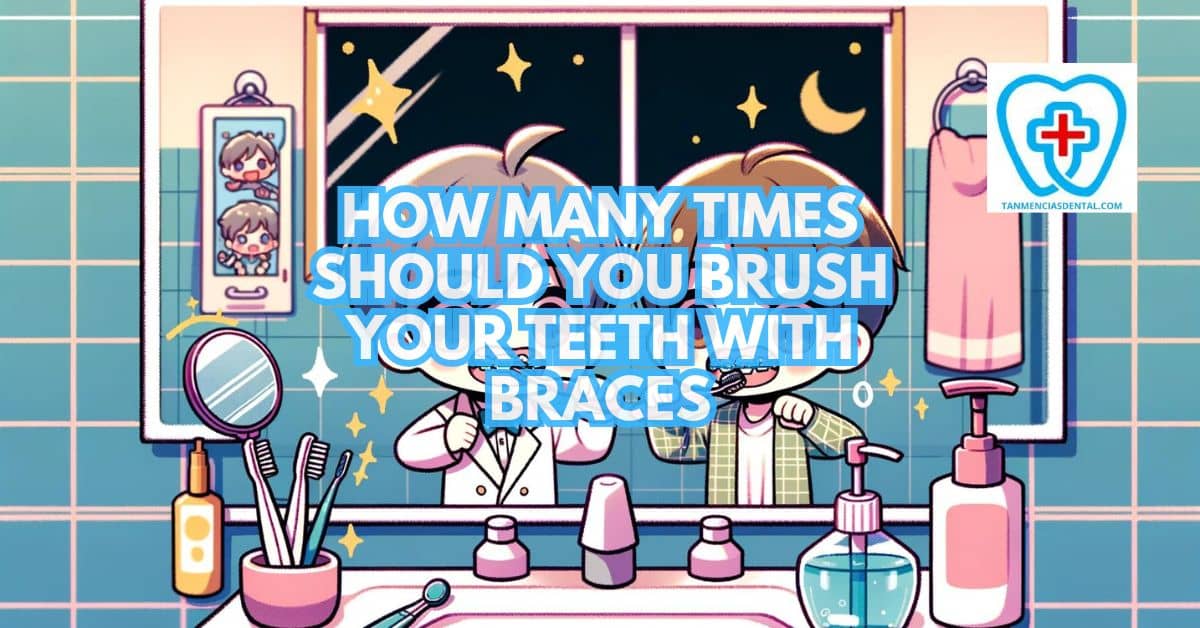Taking care of your teeth with braces needs extra attention to keep both your teeth and braces clean.
Brushing regularly helps stop plaque from building up and prevents cavities.
If you don’t brush properly, you might develop gum disease or other dental problems.
Understanding how many times you should brush your teeth with braces is important to maintain good oral health.
We’ll guide you on the best brushing habits to keep your smile healthy during your orthodontic treatment.
1. Brush After Every Meal and Snack: Keeping Food Particles at Bay
Brushing your teeth after every meal and snack is especially important when you have braces because food particles can easily get stuck in the brackets and wires.
These trapped particles can cause plaque to build up, increasing the risk of cavities and gum problems if not removed promptly.
To keep your orthodontics in great condition, make it a habit to brush with braces-specific techniques, focusing on cleaning around each bracket and along the gumline.
Using a toothbrush with soft bristles and a fluoride toothpaste can help ensure your teeth and braces are thoroughly cleaned without damaging the appliances.
Carrying a compact travel toothbrush allows you to brush wherever you are, making it easier to maintain good oral hygiene throughout the day.
If you’re unable to brush immediately, rinse your mouth with water to remove loose food debris and reduce the chances of plaque forming.
Following these steps will not only protect your braces but also ensure your teeth stay healthy and strong throughout your orthodontic treatment.
🦷 Why Are Braces So Expensive? Exploring the Hidden Costs of Orthodontic Care
2. Mastering the Technique: Brushing for Clean Teeth and Healthy Braces
Proper brushing technique is essential for effective cleaning.
Use a soft bristled toothbrush and brush at a 45-degree angle to clean around the brackets and wires.
Brush each tooth individually, spending at least two minutes to ensure thorough cleaning.
Pay extra attention to the gum line and the areas around the brackets.
Mastering the technique helps keep your teeth and braces in optimal condition.
🦷 Managing Tooth Pain During Pregnancy: How to Cope with the Discomfort
3. Flossing with Braces: Essential But Not Impossible
Flossing with braces might seem challenging, but it’s necessary to remove plaque between teeth.
Use a floss threader or orthodontic floss to navigate around the braces.
Flossing daily helps maintain healthy gums and prevents decay.
Take your time to ensure you reach between each tooth.
Regular flossing, despite being tricky, is vital for your oral health.
🦷 How Long Does Braces Removal Take? A Guide to the Process and Timeline
4. Interdental Brushes: Essential Tools for Cleaning Around Braces
Interdental brushes are small, specialized brushes that help clean the tight spaces around your braces.
They can reach areas that regular toothbrushes might miss, ensuring a more thorough clean.
Using interdental brushes every day helps remove food particles and plaque buildup effectively.
This reduces the risk of cavities and gum disease during your orthodontic treatment.
Adding interdental brushes to your daily routine keeps your mouth healthier and your braces in better condition.
🦷 Effective Ways to Treat Gingivitis in Children

5. The Power of Fluoride: Protecting Your Teeth During Treatment
Using fluoride toothpaste and mouthwash can strengthen your teeth during orthodontic treatment.
Fluoride helps repair early signs of decay and prevents cavities.
Braces can make your teeth more vulnerable to plaque and bacteria, so fluoride is an added defense.
Incorporate fluoride products into your daily routine for optimal protection.
Regular use ensures your teeth remain strong and healthy throughout your treatment.
🦷 Choosing the Right Dentist for Implants: Key Tips and Considerations
6. Don’t Forget to Rinse: Removing Debris for a Fresh Finish
Rinsing your mouth after brushing and eating helps remove debris that brushing might miss.
Use an antibacterial mouthwash to kill bacteria and freshen your breath.
Rinsing is a quick step that adds an extra layer of cleanliness to your routine.
It helps reach areas that are difficult to clean with a toothbrush alone.
This simple habit keeps your mouth clean and reduces the risk of gum disease.
🦷 Making Kids’ Dental Health Fun: Tooth Fairy Stories and Lessons
7. Regular Checkups: Keeping Your Dentist in the Loop
Regular dental checkups are essential when you have braces.
Your dentist can monitor your oral health and ensure your braces are not causing any issues.
Schedule visits every six months or as recommended by your orthodontist.
These checkups allow for the early detection and treatment of potential problems.
Staying in touch with your dentist helps ensure your treatment progresses smoothly.
🦷 How a 24-Hour Dentist Can Save You in a Dental Emergency
8. Power Up Your Cleaning: Exploring Electric Toothbrushes
Electric toothbrushes can be more effective at cleaning around braces.
They provide a consistent brushing motion and can reach difficult areas.
Many models have features like timers to help you brush for the recommended two minutes.
Consider using an electric toothbrush to enhance your oral hygiene routine.
This investment can make a significant difference in maintaining clean teeth and braces.
🦷 Quick Relief for Toothaches: Tips to Handle the Pain
9. Brushing Gently: Effective Cleaning Without Gum Irritation
Brushing too hard can damage your gums and braces.
Use gentle, circular motions to clean your teeth without causing irritation.
A soft-bristled toothbrush is ideal for avoiding injury to your gums and enamel.
Brushing gently ensures you effectively clean your teeth and braces without discomfort.
This approach helps maintain healthy gums and prevents damage to orthodontic components.
🦷 Top Electric Toothbrushes for Sensitive Teeth and Receding Gums
10. Food Choices Matter: Protecting Your Braces and Your Smile
Certain foods can damage your braces or get stuck in them.
Avoid sticky, hard, or chewy foods that can break wires or loosen brackets.
Choose braces-friendly foods, such as soft fruits, vegetables, and dairy products.
These choices help maintain both your braces and your overall dental health.
Being mindful of what you eat protects your braces and contributes to a healthy smile.
🦷 Selecting the Best Toothpaste for Sensitive Teeth and Gingivitis
11. Consistency is Key: Maintaining Good Habits for Long-Lasting Results
Consistency in your oral hygiene routine is vital for the success of your orthodontic treatment.
Brush, floss, and rinse daily to keep your teeth and braces clean.
Establishing good habits early on makes it easier to maintain them throughout your treatment.
Consistent care leads to healthier teeth and a more successful outcome.
Sticking to your routine ensures lasting results and a beautiful smile.
👨⚕️ Conclusion
Brushing your teeth with braces requires diligence and proper technique.
By following these guidelines, you can maintain good oral hygiene and ensure your treatment is successful.
Consistent care will lead to a beautiful and healthy smile when your braces come off.
Embrace these practices to keep your teeth and braces in the best possible condition.
A healthy smile is well worth the effort.
😊 Self-Promotion
Visit Tan-Mencias Dental Clinic in Parang, Marikina City, for top-notch dental care and a friendly atmosphere.
Our team is dedicated to providing you with a healthy, beautiful smile.
Have questions or need to schedule an appointment?
Call us at 0917 145 1074, send a message through our Facebook page, or use the contact form on our website.
We’re here to help with all your dental needs, and we look forward to seeing you soon!

